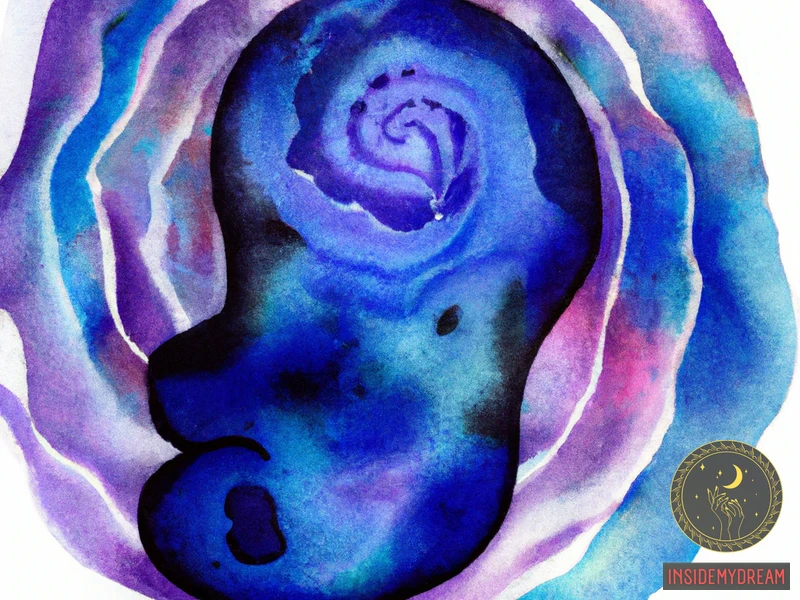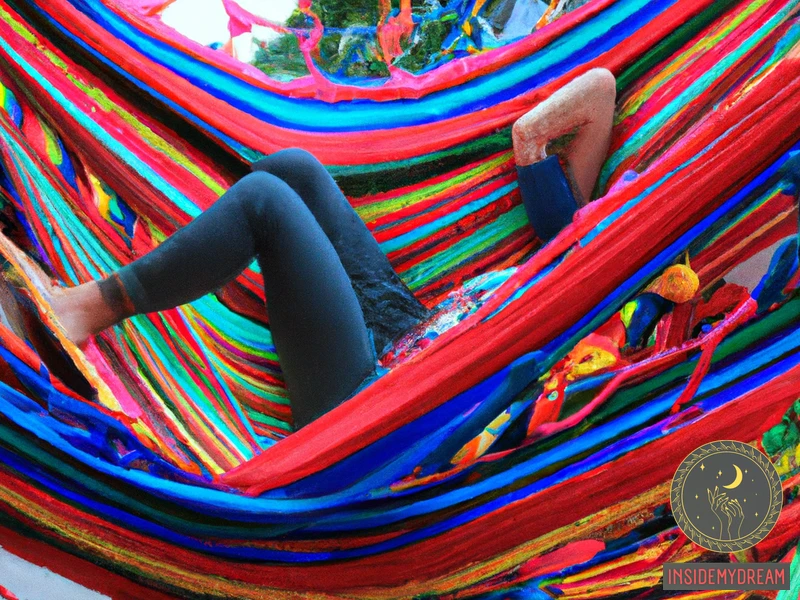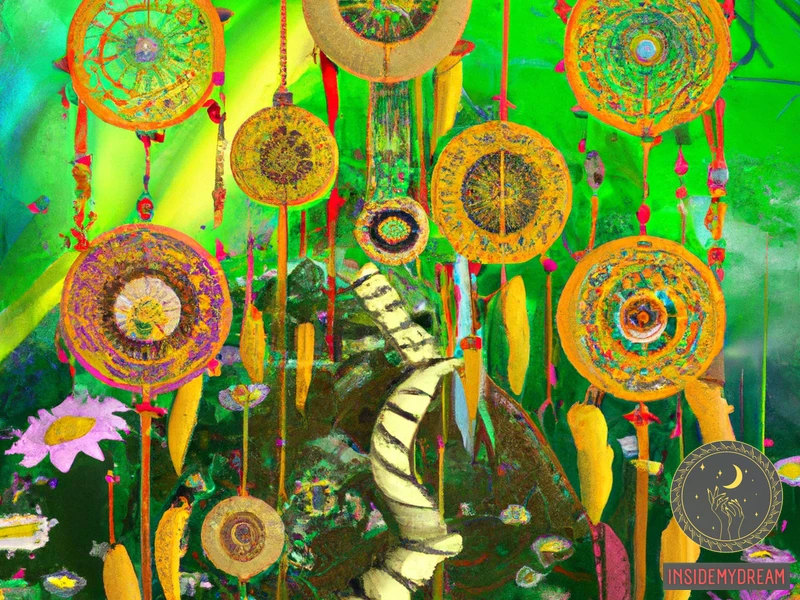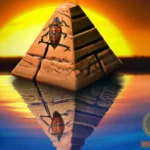What are Maya Dreams?

Maya dreams are a significant part of Indigenous Mesoamerican culture, particularly in the Mayan civilization. The Maya civilization, which thrived in the region that is now Mexico and Central America, saw dreams as a bridge between the physical world and the spiritual realm. Dreams had a substantial role in Mayan society, and their interpretation was of great importance.
Maya dreams were considered to be messages from the gods or ancestors, conveying hidden messages about one’s innermost thoughts and emotions. The Maya were convinced that their dreams held both positive and negative meanings and could bring good fortune or disaster. They interpreted their dreams to gain insight into their future, their personal lives, and the events happening around them.
It’s essential to note that Maya dreams are not restricted to the Mayan civilization; people from around the world may experience this type of dream. Maya dreams are vivid and likely to contain recurring patterns and images that can convey powerful emotions and messages. In today’s time, we can interpret these dreams using established methods that incorporate indigenous wisdom and modern psychology.
If you want to know more about the interpretation of dreams, you can read on the Spiritual Meaning of Seeing Someone Pregnant in a Dream or about Shark Dreams Meaning.
The Significance of Maya Dream Interpretation
Dreams have always been a source of fascination for humans, and for the ancient Maya civilization, they held significant importance in their daily lives. Maya dreams were often considered to be a portal to the spirit world and a medium for communication with the gods. The interpretation of these dreams was an essential part of Maya culture, and it has been passed down through generations, providing insight into the secrets of the subconscious. The significance of Maya dream interpretation lies in the symbolism, themes, and hidden meanings that can help us unravel the mysteries of our minds. In this section, we will explore the different aspects of Maya dream interpretation and how it can help us gain a deeper understanding of ourselves. You may also be interested in learning about the black dog dream meaning or the dream of a fire truck which are two more interpretations of dreams.
1. Understanding the Symbolism
Understanding the symbolism in Maya dreams is crucial to uncovering their hidden meanings. Dreams are often symbolic, with each element holding a deeper significance related to the dreamer’s subconscious thoughts and emotions. It is important to interpret these symbols correctly to gain insight into the dreamer’s inner world. Let’s take a look at some common Maya dream symbols:
| Symbol | Meaning |
|---|---|
| Snakes | Snakes are often associated with transformation, healing, and change. However, they can also represent danger or deceit, depending on the context of the dream. |
| Water | Water is a powerful symbol of emotions, representing the depths of the subconscious mind. Calm waters may indicate peace, while rough seas may symbolize emotional turmoil. |
| Flying | Flying represents freedom, ambition, and the ability to overcome obstacles. It can also represent a desire to escape from reality. |
| Death | Death can represent change, transformation, or the end of something. It may also represent fear of the unknown. |
| Animals | Animals often represent primal instincts and emotions. Specific animals may represent different qualities, such as strength (lion), intelligence (owl), or playfulness (dog). |
| Teeth Falling Out | This dream usually represents anxiety or insecurity in the dreamer’s waking life. It may also represent a fear of getting older or losing power. |
Understanding these symbols is just the first step in unraveling the secrets of Maya dreams. It is also important to consider the context of the dream and how the dreamer feels about the symbols in the dream. For example, while snakes generally represent transformation, if the dreamer has a strong fear of snakes in waking life, that fear may carry over into the dream and change the symbolism. Additionally, cultural and personal associations may affect the interpretation of certain symbols. For example, someone from a culture where possums are seen as pests may interpret a dream of a possum differently than someone from a culture where they are seen as spiritual animals.
In the following sections, we will explore common Maya dreams and their meanings, as well as additional factors to consider when interpreting dreams. If you want to learn more about dream interpretation, check out our post on a Blue Whale Dream Meaning,Dreaming of Rivers,Possum Dream Symbolism,What Dreams of Donuts Mean,Dreams About Broken Acrylic Nails and Meaning of Brown Leaves in Your Dreams.
2. Identifying the Central Themes
Identifying the central themes in your Maya dreams is an essential step in understanding their meaning. By doing so, you can get a deeper understanding of the underlying messages your subconscious mind is trying to convey. Here are some steps to help you identify the central themes in your dreams:
- Write down your dream: To begin with, write down your dream in as much detail as possible. List all the images, situations, people, and emotions that you experienced in your dream.
- Look for recurring symbols: Look for symbols or themes that appear repeatedly throughout your dream. These symbols could be objects, people, or situations that reoccur throughout the dream. Pay attention to any unusual or vivid symbols, they often carry a greater significance.
- Pay attention to the emotions: Take note of how you felt during the dream. Were you scared, happy or sad? Did it feel real or surreal? All these emotions can give you insights into the central theme of the dream.
- Connect with real-life events: Try to connect your dream with your real-life experiences. Sometimes, our dreams can reveal hidden desires, fears, or unresolved issues, which may be a source of stress or anxiety in our waking life.
- Ask yourself some questions: To help you identify the central themes, ask yourself questions such as: what does this dream make me think of? Or, What areas of my life does this dream relate to?
By identifying the central themes in your Maya dreams, you can start to unravel the secrets of your subconscious mind. It’s important to keep in mind that dream interpretation is subjective, and the meaning of your dream may be unique to you. So, take your time, be patient, and let the symbols and emotions guide you towards discovering the hidden meanings within your dreams.
3. Decoding the Hidden Meanings
When it comes to interpreting Maya dreams, decoding the hidden meanings is crucial. This involves delving deeper into the symbols and themes present in the dream to uncover what the subconscious is trying to communicate. Here are some steps to help with decoding hidden meanings:
- Pay attention to your emotions: Emotions are a crucial aspect of dream interpretation, as they can provide valuable insights into your subconscious thoughts and feelings. Take note of how you felt during the dream and try to connect that feeling with different elements in the dream world.
- Consider the context: Dreams do not exist in isolation, and the context in which they occur can have a significant impact on their meaning. Consider the events leading up to the dream, as well as any personal, social, or cultural factors that may have influenced the dream.
- Look for patterns: Dreams are often full of symbolism, and identifying patterns or recurring elements can be a key to unlocking hidden meanings. For example, if you frequently dream about water, it may be helpful to explore the various meanings and associations that water can have in different contexts.
- Be open to multiple interpretations: Dreams can have multiple layers of meaning, and what may be significant to one person may mean something different to another. Keep an open mind and explore different possible interpretations.
Decoding hidden meanings in Maya dreams can be a complex and challenging process, but by paying attention to your emotions, context, patterns, and multiple interpretations, you can gain deeper insights into your subconscious and promote personal growth.
The Most Common Maya Dreams and What They Mean

Many people have experienced vivid and sometimes confusing dreams at some point in their lives. However, Maya dreams, which are believed to be messages from the subconscious mind, hold a special significance in the ancient world of the Mayas. If you’re interested in understanding your Maya dreams, here are some of the most common themes and interpretations to keep in mind. From snakes to death, these dreams can hold powerful symbolic meanings that may reveal deeper aspects of your psyche. So, let’s dive in!
1. Dreams about Snakes
Dreams about snakes are one of the most common Maya dream themes. While they can be terrifying to some, such dreams can hold important messages about your subconscious mind. Below are some possible interpretations of these dreams:
1. Transformation: Snakes are often associated with transformation because of their ability to shed their skin and emerge as a new being. If you dream of snakes, it could represent changes or transformations taking place in your life.
2. Healing: In some cultures, snakes are revered for their healing properties. If you dream of a snake, it could represent the need for healing, either physically or emotionally.
3. Fear: For some people, snakes can represent fear or anxiety. If you are afraid of snakes, dreaming of them could be a manifestation of your fears.
4. Sexuality: Snakes have been associated with sexuality and sensuality in many cultures. If you dream of snakes, it could represent your own sexual desires or those of someone else in your life.
5. Wisdom: In some cultures, snakes are seen as wise creatures, able to navigate the world with intelligence and cunning. If you dream of a snake, it could represent the need for wisdom in your own life.
Dreams about snakes are highly symbolic and can represent a range of thoughts, feelings, and experiences. If you have such a dream, it is important to reflect on its possible meanings and how they relate to your life. Keeping a dream journal can aid in this reflection and help you uncover deeper insights into your subconscious mind.
2. Dreams of Water
Water is one of the most common symbols in dreams, and its interpretation depends on various factors, such as the context and the dreamer’s personal associations. Here are some of the most common interpretations of dreams about water:
| Interpretation | Description |
| Emotional state | Dreams about water can represent the dreamer’s emotional state. For instance, calm and clear water may symbolize inner peace, whereas turbulent or murky water can signify emotional turmoil or uncertainty. |
| Renewal and transformation | Water is often associated with renewal and transformation. Dreams about water can indicate that the dreamer is going through a significant change or a transition in their life. |
| Unconscious mind | Water is a classic symbol of the unconscious mind. Dreams about water can represent the dreamer’s connection to their subconscious and their intuition. |
| Cleansing and purification | Water is a common symbol of cleansing and purification. Dreams about water can suggest that the dreamer needs to cleanse themselves of negative emotions, thoughts, or experiences. |
| Sexuality and fertility | Water is sometimes associated with sexuality and fertility, especially when it appears in the form of a spring, stream, or fountain. Dreams about water can indicate the dreamer’s sexual desires or their potential for creativity and growth. |
| Drowning | While dreams about water can have positive connotations, they can also be negative, especially when the dreamer is drowning. Such dreams can signify a feeling of being overwhelmed, suffocated, or helpless in real life. |
In any case, it is important to remember that dream interpretation is highly subjective and depends on the dreamer’s personal experiences and associations. Analyzing dreams about water requires careful consideration of both the dream’s details and the dreamer’s emotions and thoughts. Keeping a dream journal and seeking professional help can also be useful techniques for unraveling the secrets of your subconscious mind.
3. Dreams of Flying
One of the most intriguing Maya dreams is that of flying. In this dream, you may find yourself soaring through the air, weightless and free. The experience of flying in a dream can be exhilarating and euphoric, but it can also leave you feeling confused and uncertain about its meaning.
Below is a table outlining some possible interpretations of this dream:
| Interpretation | Explanation |
|---|---|
| Fearlessness and Freedom | The ability to fly can symbolize a sense of liberation and a willingness to take risks without fear. |
| Ambition and Aspiration | Flying can also represent a desire to rise above difficulties and achieve ambitious goals. |
| Control and Power | In some interpretations, flying can represent a sense of control and power over one’s surroundings. It can also suggest a desire for control in waking life. |
| Escape and Avoidance | Flying may also indicate a need to escape from or avoid a difficult situation, either in waking life or in the dream itself. |
| Lucidity and Awareness | Finally, flying dreams may also be a sign of increased awareness and lucidity. If you are aware that you are dreaming and are able to control your flight, it may suggest a heightened sense of self-awareness and control in waking life. |
It’s important to note that the meaning of a flying dream can vary depending on the specific details of the dream and the individual’s personal experiences and associations. For example, if the dreamer is afraid of heights, flying may signify something different than if the dreamer enjoys skydiving or base jumping.
The symbolism of flying in Maya dream interpretation is complex and multifaceted. By examining the different possible interpretations and considering the context of the dream, you can start to unravel its hidden meanings and use it as a tool for personal growth and self-discovery.
4. Dreams of Death
Dreams of death are some of the most perplexing and often the most difficult to interpret. These dreams do not necessarily portend actual death or dying, but rather represent transformation or change. Here are some symbols and meanings to consider when interpreting dreams of death:
- Graveyards or coffins: These symbols may indicate that you are ready to let go of something or someone in your waking life. It could also signify the end of a phase or project.
- Death of a loved one: These dreams can be quite distressing, but usually reflect feelings of loss or change. They may also represent unresolved feelings about the person who has passed away.
- Recurring death dreams: If you find yourself continually dreaming of your own death, it may be a sign that you are going through a period of significant transformation or change in your waking life.
- Resurrection: Dreams of resurrection can be interpreted as a positive sign of change or rebirth. It may represent a new beginning or a fresh start.
It’s important to note that the interpretation of dreams of death can be different for each individual, and personal associations should be taken into account. For example, if you have a fear of death in waking life, your dreams of death may be reflecting that fear. Additionally, cultural interpretations and past life experiences can also influence the meaning of these dreams. It’s crucial to analyze the dream as a whole and not just focus on one specific symbol or image.
If you are struggling to interpret your dreams of death, seeking professional help can be beneficial. A therapist or dream interpretation specialist can help you delve deeper into the meaning and significance of these dreams. Remember, dreams of death do not necessarily mean literal death or dying, but rather represent change and transformation.
5. Dreams about Animals
One of the most common themes in Maya dreams is animals. Seeing animals in your dreams can have various interpretations depending on the type of animal, its behavior, and the context of the dream. Here are some of the most common animals and their meanings in Maya dream interpretation:
- Snakes: Seeing snakes in your dream can have both positive and negative connotations. On the one hand, a snake can represent healing, transformation, and renewal. On the other hand, it can also signify danger, deceit, and betrayal. The interpretation of the dream depends on the color of the snake, its behavior, and the emotions you feel during the dream.
- Birds: Birds are often associated with freedom, spirituality, and higher consciousness. Seeing birds in your dream can indicate a desire for independence or a yearning for spiritual growth. The type of bird you see can also have specific interpretations. For example, seeing an eagle can represent strength and power, while seeing a dove can symbolize peace and harmony.
- Cats: Cats are often associated with femininity, intuition, and mystery. Seeing a cat in your dream can signify a need for independence or a sense of detachment from others. Alternatively, it can point to your intuitive abilities and your ability to see beyond the surface level.
- Dogs: Dogs are often seen as loyal companions and symbols of companionship and loyalty. Seeing a dog in your dream can represent a strong bond with a friend or family member or signify your need for companionship and support.
- Bears: Bears are often associated with strength, protection, and self-sufficiency. Seeing a bear in your dream can point to your own inner strength and your ability to protect those you care for. Alternatively, it can represent a need to stand up for yourself or a warning to be aware of potential danger.
- Spiders: In many cultures, spiders are seen as symbols of creativity, weaving, and patience. In Maya dream interpretation, seeing spiders can represent a need for patience and perseverance in a creative project or situation. It can also point to the need for balance and harmony in your life.
It’s important to remember that these are just general interpretations and that your personal associations and cultural background can also influence the meaning of animals in your dreams. When trying to understand the messages in your dreams, it’s important to analyze the dream as a whole and to look at how different elements interact with each other. Keeping a dream journal and seeking professional help can also be useful tools for interpreting your Maya dreams.
6. Dreams about Teeth Falling
One of the most common Maya dreams is about teeth falling out. While it may seem like a bizarre and uncomfortable experience to have, this dream has a deep symbolism that reflects one’s emotional and psychological state. There are several possible interpretations of this dream, depending on various factors such as personal associations, cultural beliefs, and life experiences.
Here are some possible interpretations of dreams about teeth falling:
- Personal loss or change: Losing teeth in a dream can symbolize the fear of losing something important, be it a job, a relationship, or a cherished possession. It can also represent an upcoming change that one feels powerless to prevent or control.
- Powerlessness or vulnerability: Losing teeth can make one feel exposed and vulnerable, which can reflect feelings of powerlessness or lack of control in one’s waking life. It may also suggest a fear of aging or losing one’s physical and mental faculties.
- Fear of embarrassment: Losing teeth can also relate to one’s fear of being judged, criticized, or ridiculed in public. It may reflect a fear of appearing weak or imperfect in front of others.
- Rebirth or renewal: On a positive note, losing teeth can also represent a metamorphosis or rebirth, whereby one sheds old or negative aspects of oneself to make way for new growth and possibilities.
How to interpret dreams about teeth falling:
To get a better understanding of what dreams about teeth falling signify, it’s useful to consider other factors that may influence their meaning. Here are some tips for interpreting these dreams:
- Keep a dream journal: Write down your dreams as soon as you wake up, including any emotions, sensations, or details that stand out. Look for recurrent themes or patterns in your dreams, as well as changes in your dream content over time.
- Analyze dreams holistically: When interpreting dreams, avoid focusing on isolated symbols or elements, but try to see the dream as a whole. Consider the context, the setting, the characters, and the feelings associated with the dream to uncover its deeper meaning.
- Seek professional help: If you have recurring dreams about teeth falling or other unsettling themes, consider seeking the advice of a therapist or dream interpreter. They can provide you with personalized insights and techniques for coping with your dreams.
Dreams about teeth falling can be perplexing and unsettling, but they can also reveal hidden truths about ourselves and our lives. By exploring their meanings and messages, we can gain greater self-awareness, healing, and personal growth.
Other Important Factors in Maya Dream Meaning
As intriguing as Maya dream interpretation may seem, understanding their true significance requires us to look beyond their symbolism and themes. There are a plethora of other factors at play that can significantly affect the meaning of our dreams. These factors include our personal associations, cultural interpretations, emotional state, and life experiences. By unraveling these enigmatic elements, we can gain a deeper insight into the messages our subconscious mind is trying to convey to us. So, let’s delve deeper into these crucial factors and uncover the secrets of Maya dream meaning.
1. Personal Associations
Personal associations are an important aspect of Maya dream meaning that should not be overlooked. Our life experiences, beliefs, culture, and personality shape our interpretation of dreams. Here are some ways personal associations affect our dream interpretation:
- Beliefs: Our spiritual, religious or philosophical beliefs may affect our interpretation of dreams. For example, snakes may be interpreted as evil or a symbol of Satan in some cultures, while they may be seen as a symbol of transformation in others.
- Culture: Cultural symbols and myths can shape our personal associations with certain dream images. For example, water may be seen as a cleansing and purifying symbol in some cultures, while in others it may be a symbol of death and chaos.
- Life experiences: Our personal experiences and memories can influence our interpretation of dreams. For example, a dream about a house fire may be a traumatic experience for someone who has experienced a fire in real life, while it may not have the same impact on someone who has not.
- Personality: Our personality traits can affect our association with certain symbols. For example, someone who is adventurous and courageous may interpret a dream about flying as a positive experience, while someone who is anxious or fearful may interpret it negatively.
It is important to take these personal associations into consideration when interpreting Maya dreams. By examining our beliefs, experiences, and cultural background, we can gain deeper insights into the meanings of our dreams. However, it is also important to remember that these associations are unique to each individual, and it is crucial to avoid making assumptions or generalizations about the meaning of a dream based solely on personal associations.
2. Cultural Interpretations
Culture plays a significant role in Maya dream interpretation. Dreams are often influenced by cultural beliefs, values, and traditions. It’s important to consider the cultural context of your dream when interpreting its meaning.
Here are some cultural interpretations to consider:
- Maya Mythology: The Maya civilization had a rich mythology that is often reflected in their dreams. For example, dreaming about the jaguar, a sacred animal in Maya culture, could signify power and strength.
- Religious Beliefs: Religion also plays a crucial role in understanding Maya dreams. If you have strong religious beliefs, your dreams may reflect them. For example, dreaming about meeting a deity could indicate a spiritual awakening or guidance.
- Historical Events: Historical events, such as the Spanish conquest of the Maya, can also influence dreams. For instance, dreaming about a battle or war could symbolize a struggle or conflict that needs to be resolved.
- Cultural Practices: Cultural practices, such as shamanism, can also have a significant impact on Maya dreams. Dreams about shamans or spiritual healers could indicate a need for physical or emotional healing.
It’s important to remember that cultural interpretation is subjective and may vary from person to person. It’s essential to reflect on your personal cultural experiences and how they may impact your dreams.
3. Emotional State
Understanding the emotional state of the dreamer is a crucial factor in Maya dream interpretation. Dreams are often a reflection of the dreamer’s emotional well-being and can be influenced by a range of emotions, from anxiety and fear to joy and excitement. Here are some important points to consider regarding the emotional state of the dreamer when interpreting Maya dreams:
- Prioritizing strong emotions: If a dreamer experiences intense emotions during a dream, it is important to prioritize the analysis of those emotions. Strong emotions often hold important information about the dreamer’s psyche and can reveal deeper insights into their subconscious mind.
- Identifying the range of emotions: Dreams can evoke a range of emotions, both positive and negative. It is important to understand the variety of emotions present within the dream and how they interact with one another. For example, a dreamer may experience fear and excitement simultaneously, which can indicate a conflict or tension within the subconscious mind.
- Recognizing recurring emotional themes: Some dreamers may experience recurring emotional themes or patterns in their dreams. For instance, a dreamer may often feel trapped or powerless in their dreams, indicating a deeper emotional issue they may need to address in their waking life.
- Considering waking life influences: A dreamer’s emotions in their waking life may also influence their dreams. For example, if a dreamer experiences stress or anxiety in their daily life, they may be more likely to have nightmares or dreams that reflect those emotions.
- Reflecting on emotional changes: Changes in a dreamer’s emotional state can also provide valuable insight into their subconscious mind. If a dreamer begins a dream feeling fearful but ends feeling empowered, it may indicate a shift in their emotional state or a resolution of a subconscious conflict.
Analyzing the emotional state of the dreamer is a vital aspect of Maya dream interpretation. By considering the range, intensity, and recurrence of emotions within a dream, one can gain a deeper understanding of the dreamer’s subconscious mind and use this knowledge for personal growth and healing.
4. Life Experiences
Our life experiences inevitably shape the content of our dreams, and understanding how they influence our subconscious mind is crucial in interpreting Maya dreams. Here are some of the ways our life experiences can affect our dreams:
- Trauma: Traumatic events can not only cause distressing dreams but also cause recurring nightmares. They can also influence the way in which we remember our dreams and make them more vivid and emotionally charged.
- Recurring themes: Recurring themes in our dreams can stem from strong emotions associated with past experiences, and understanding these connections can shed light on our unresolved issues.
- Relationships: Our relationships, especially with significant others, can have a profound impact on the content of our dreams as we process our emotions and experiences relating to these relationships.
- Career and Education: Career and education-related stresses can manifest in our dreams in the form of being unprepared for an exam or presenting a work project. Understanding these themes can help us address our fears and anxieties.
By examining our life experiences in relation to our dream content, we can gain valuable insights into our subconscious and how to improve our waking lives.
How to Use Maya Dream Interpretation for Personal Growth

Maya dream interpretation can be a powerful tool for personal growth and self-discovery. Once you have deciphered the hidden meanings of your dreams, you can use this knowledge to better understand your thoughts, emotions, and behaviors in your waking life. Here are a few ways you can use Maya dream interpretation to enhance your personal growth:
Reflect on the Symbolism
After interpreting your dream, take some time to think about the symbolism and what it might represent in your life. Consider how the dream may relate to your current circumstances and how you can use the knowledge gained to navigate any challenges you may be facing.
Reflect on Personal Associations
Consider any personal associations you have with the symbols and themes of your dream. For example, if you dream of a snake and have a phobia of them, this can affect the interpretation of the dream. By reflecting on personal associations, you can gain deeper insights into the meaning of your dreams.
Explore Emotional State
When interpreting your Maya dreams, it is important to consider your emotional state at the time of the dream. Emotions can play a powerful role in our dreams, and understanding how they manifest can give us insight into our emotional responses in our waking life.
Use Dream Journaling
Dream journaling can be a helpful technique for improving your ability to remember and interpret your Maya dreams. By keeping a journal, you can observe recurring themes, symbols, and emotions that may help you gain a better understanding of your subconscious mind.
Seek Professional Help
If you are struggling to interpret your dreams or are experiencing recurrent nightmares, seeking professional help may be beneficial. A therapist or dream analyst may be able to provide additional insight and guidance in understanding the meanings of your Maya dreams.
Maya dream interpretation can be a valuable tool for personal growth and self-exploration. By examining the symbolism, personal associations, emotional state, and other important factors, you can gain a deeper understanding of yourself and use this knowledge to make positive changes in your waking life.
Interpreting Maya Dreams: Tips and Techniques
Exploring the hidden messages of your Maya dreams can be a profound tool for self-discovery and personal growth. However, interpreting your dreams effectively can be a challenging task. To help you decipher the symbolism and unravel the secrets of your subconscious mind, here are a few valuable tips and techniques that you can use. With these powerful tools, you’ll be able to unlock the deeper meaning behind your dreams and use it to gain a greater understanding of yourself and your life’s journey. Let’s dive into this fascinating journey of self-discovery and unlock the mysteries of your Maya dreaming world!
1. Keep a Dream Journal
Keeping a dream journal is an essential step in understanding the meaning and significance of your Maya dreams. Writing down your dreams as soon as you wake up helps you to remember the details more accurately and to capture the vividness of your experience. Here are some tips for keeping a dream journal:
- Keep a notebook and pen by your bed: This will allow you to write down your dreams as soon as you wake up, before the details fade away.
- Record as much detail as possible: Write down everything you can remember, even if it seems insignificant. Include colors, emotions, and any other sensory details that stood out to you.
- Date your entries: This helps you to track patterns and themes over time.
- Organize your entries: You may want to categorize your dreams based on themes or types, such as “flying dreams” or “water dreams,” to better understand the patterns in your dreaming.
- Review your journal regularly: Set aside time to review your dreams and look for any recurring symbols or themes that may be worth exploring further.
By consistently recording and reviewing your dreams in a dream journal, you can gain a greater understanding of your subconscious mind and unlock insights into your waking life.
2. Analyze Dreams Holistically
Analyzing dreams holistically involves looking at all the elements within a dream and considering them as a whole rather than individually. This approach can help uncover deeper meanings and relationships between different symbols and themes.
One way to analyze dreams holistically is by creating a table that categorizes the different elements of a dream. This table can include columns for symbols, emotions, actions, and other relevant details. Within each column, the dreamer can describe their experience and feelings related to that aspect of the dream.
For example, if someone has a dream about being chased by a bear, they could create a table that looks like this:
| Symbol | Emotion | Action |
|——–|———|——–|
| Bear | Fear | Chase |
Using this table, the dreamer could then consider how these different elements relate to each other. They may ask themselves questions like:
– What does the bear represent in my life?
– Why am I feeling fear in this situation?
– What am I trying to escape or avoid in my waking life?
By considering these different aspects of the dream as a whole, the dreamer may be able to uncover deeper insights and connections that they might have missed by only focusing on one element of the dream.
It is important to remember that dream analysis is highly subjective and there is no one “right” way to interpret a dream. However, taking a holistic approach can help provide a more comprehensive understanding of the dream and its potential meanings.
3. Seek Professional Help
For some people, decoding the hidden meanings of their Maya dreams can be a daunting task. It may require a deeper understanding of symbolic language, personal associations, and cultural interpretations. In such cases, seeking professional help can provide valuable insights and a new perspective on the dream’s significance.
Here are some reasons why seeking professional help may be beneficial:
- Experience: Professional dream interpreters have had years of experience in analyzing and interpreting dreams. They have studied the intricacies of symbols and can provide a detailed and accurate analysis of the dream.
- Objectivity: A professional dream interpreter can provide an objective perspective on the dream without any personal biases getting in the way. They can help separate the dreamer’s personal associations from the universal meaning of symbols.
- Confidentiality: Dream interpretation is a very personal process and may involve sharing intimate details about one’s life. Seeking professional help ensures confidentiality and privacy.
- Expertise: Professional dream interpreters are well-versed in various psychological theories and can provide a broader interpretation of dreams. They can also offer suggestions and techniques for personal growth.
Seeking professional help can be a helpful tool in understanding the meanings and messages of Maya dreams. It can provide clarity, insight, and a path for personal growth.
The Bottom Line
Understanding the deeper meaning behind Maya dreams can provide valuable insight into one’s subconscious mind and personal growth. It is important to recognize the symbolism and themes present in these dreams, as well as the influence of personal associations, cultural interpretations, emotional state, and life experiences.
Keeping a dream journal is a helpful tool in analyzing and interpreting Maya dreams, as it allows for a record of recurring patterns and themes. It is also important to approach dream analysis holistically and consider all aspects of the dream, including emotions and physical sensations.
However, seeking professional help from a therapist or dream analyst may be necessary for those who are struggling to interpret their dreams or are experiencing recurring nightmares.
Decoding the hidden meanings of Maya dreams requires patience, introspection, and an open mind. By understanding the significance of these dreams, individuals can gain a greater understanding of themselves and their place in the world.
Frequently Asked Questions
What is the origin of Maya dream interpretation?
Maya dream interpretation has roots in the ancient Mayan civilization of Mesoamerica, which believed dreams were an important tool for accessing the subconscious and communicating with the divine.
Do all Maya dreams have a hidden meaning?
While not every dream may hold a profound or hidden meaning, the Maya believed that dreams were a portal to the subconscious and could reveal important insights into a person’s life and emotions.
How can I tell if a dream is a Maya dream?
Maya dreams are typically characterized by vivid imagery, symbolism, and alternative realities. If you have a dream that feels particularly significant, it may be worth exploring through Maya dream interpretation.
What is the significance of snake dreams in Maya culture?
Snakes are a powerful symbol in Maya culture and are often associated with regeneration, healing, and transformation. A snake dream may signify the shedding of old beliefs or the emergence of a new self.
Why are water dreams important in Maya dream interpretation?
Water is a universal symbol of the emotional state, and in Maya culture, it represents the unconscious mind. Water dreams can reveal a person’s emotional state or may signify a need for emotional healing and self-reflection.
What do flying dreams mean in Maya dream interpretation?
Flying dreams are often associated with personal freedom and transcendence in Maya culture. These dreams may signify a desire to break free from restrictive beliefs or situations and embrace a more liberated existence.
Are death dreams always negative in Maya dream interpretation?
In Maya culture, death dreams are not necessarily negative and may signify a transformation or rebirth. These dreams may represent the shedding of old beliefs or patterns in favor of a new way of being.
What do animal dreams signify in Maya dream interpretation?
Animal dreams are often rich with symbolism in Maya culture and may represent a person’s instincts, inner desires, or spiritual guides. The appearance of a specific animal in a dream may hold significant meaning for the dreamer.
How can personal associations affect Maya dream interpretation?
Personal associations such as memories, experiences, or cultural beliefs can shape the symbolism and interpretation of a dream in Maya culture. It’s important for each person to consider their personal associations when exploring the meaning of a dream.
How can Maya dream interpretation be used for personal growth?
Maya dream interpretation can provide valuable insights into a person’s subconscious and emotional state. By exploring and reflecting on dream symbolism and themes, individuals can gain a greater understanding of themselves and areas for personal growth and development.









